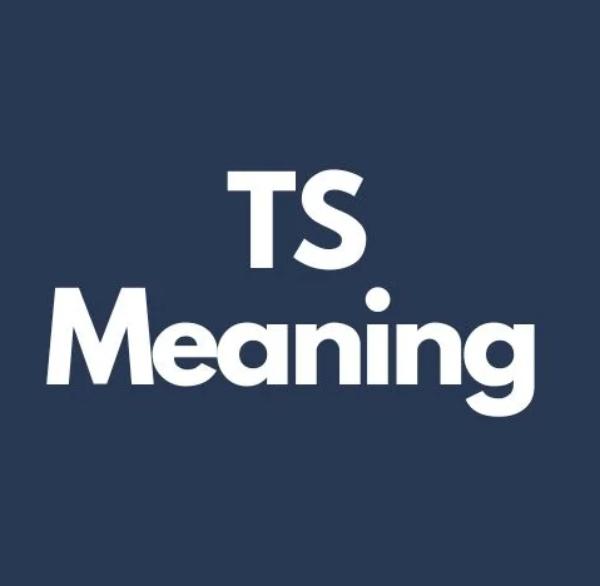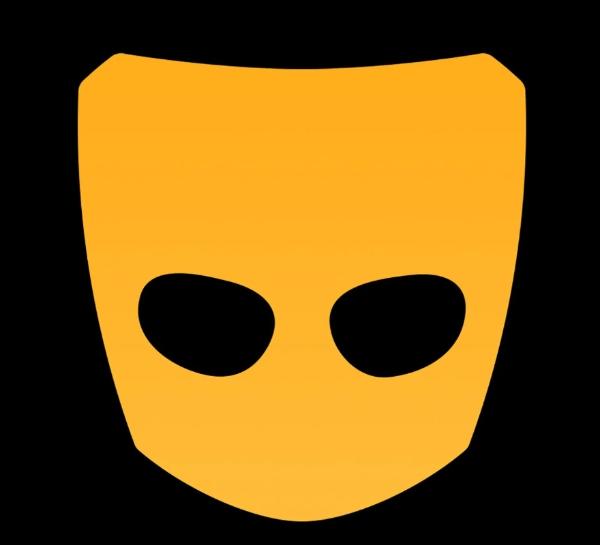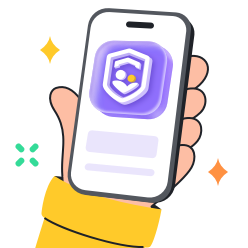When it comes to our children’s language online, there is so much to keep up with. Sometimes, It almost feels like learning a new language. Abbreviations and slang rule the digital world, and “TS” is just one of them. If we understand “TS meaning” and where it can show up all over social media, messaging apps, etc, it makes us feel good knowing that our kids are saying things that are appropriate for their age. By examining the way different meanings and contexts of “TS” have evolved in the digital world, we get a better understanding of how to travel through the always-changing digital language.
What does TS mean?
“TS” means different things all around. Mostly, what that means largely depends on the context, platform, and the user’s intent. Below we will examine the main meanings of ‘TS’ including general aspects, slang, and everyday instances. But each unique interpretation of their little acronym can show us how versatile this little acronym has become. Similarly, it can help us get a jump start on what our kids might be mumbling in their digital conversations.



General meanings
In many cases, “TS” represents familiar, non-slang terms used in various fields. This can be from business and technology to everyday expressions:
- Technical support: Throughout tech or customer service contexts, ‘TS’ stands for technical support. For Example: “I’ll get TS to take care of the Wi-Fi issue (maybe).”
- Time stamp: “TS” can be a timestamp where TS means the exact time and date of something that happens. For Example, your collegue might say “Reconfirm how the TS on that email works please.”
- Tough situation: In everyday chats, “TS” can mean challenging moments. for example: “I’m really in a TS with my burden.”
With the understanding of these general meanings, we can perceive that “TS” is a term that can easily change its sense. Mostly, it is in casual conversations but you can also expect to see it in a professional context.
What does TS mean in Slang?
The term “TS” now has informal use. Still, the meaning differs depending on the tone used and the context within which the words are being used. Here’s how “TS” is frequently used in casual digital conversations:
- “This Shit” or “That Shit”: Often teens use ‘TS’ to show strong opinions, frustration or excitement. It is a situation, a person, or an experience as a function of the environment. For example, ‘You didn’t see TS at the game last night too?’ Wild!”
- “Talk Soon”: It’s a less formal way to end a conversation. “TS” gets used by kids in texting as a way to end swiftly. For example, you can say when you leave “Gotta go now, TS!”
Everyday chats
“TS” is a practical shortcut that kids often use to communicate in a familiar, relaxed way. Here are some examples to illustrate how it fits into everyday conversations:
- “I had a rough day today, TS with school!”
- “Let’s wrap this up. TS!”
Realizing that “TS” is a flexible word helps us to understand it a little better. This also helps figure out how kids use it in different situations with their friends.
What does TS mean on Snapchat?
On Snapchat, teens use it to say what a situation is like or how a teen is feeling. Similarly, they might use it to make a story a little more interesting.



Here are some interpretations of “TS” on Snapchat:
1. “This Shit” or “That Shit”: Like, in an angry response to something a teen might have seen or experienced, teens may use the “TS” to express their feelings. It could be in school drama or something that you didn’t expect to happen.
- Example: “See TS on the story?” Unbelievable!”
2. “Tough Situation”: “TS” could be used by kids to mean a difficult, bad, or awkward situation they came across. For teens who generally share their ups and downs on Snapchat, “TS” may mean tough things.
- Example: “Well in TS with my grades this semester, I’m working at it.”
3. “Timestamp”: A more practical use of “TS” is used as a time stamp on snaps or messages, showing when something was either posted or sent. Timestamps are used by teens to know when messages or snaps have been sent and received.
- Example: “I don’t know, check that TS I sent that snap ages ago!”
By knowing the meanings of each, we have some idea of how Snapchat users understand ‘TS’ in different contexts. Hence, we can better understand our kids’ usage of the platform.
TS meaning on TikTok and Instagram



Abbreviations such as ‘TS’ are platforms’ favorite on TikTok and Instagram, whether in captions or comments or even video texts. Here’s how “TS” appears on these social media giants:
1. This Shit” or “That Shit”: Users of TikTok and Instagram may add ‘TS’ in captions or comments to denote an experience or situation.
- Example: “TS was insane! Can’t believe I did that.”
2. “Talk Soon”: This is a light way of demarcating the ends of an interaction. It allows kids to quickly wrap up a conversation using it in comments or replies.
- Example: “Great video! TS!”
3. “Tough Sh*t”: It is a simple expression to tell people how you are going to react to something hard when someone does something hard.
- Example: ‘I knocked, but couldn’t make it to the party?’ TS.”
Social media slang is very wide and we should understand the difference when talking across platforms. That way, we can ensure a positive and safe conversation.
TS meaning from a girl or a guy
“TS” can vary slightly concerning who is saying it and for what context. It is used mainly for individual use. Here are a few scenarios where “TS” might appear in chats between girls or guys:
- “Talk Soon”: Sent out almost universally and generally friendly, this is a popular sign of wrapping up a conversation for both genders.
- “That Shit” or “Tough Shit”: Used especially in close friendships where teasing is common, and often casually, jokingly.
- Transgender Context: The acronym TS (transgender) is sometimes used instead of transgender folks. Similarly, it is also used for topics within LGBTQ+ spaces or in discussions. It’s a respectful language for talking about gender identity in places where these issues are important.
Casual Conversations
In everyday chats, the ‘TS’ feels familiar and shares the experience. They use it with a group of friends who understand what they’re about, or some people can relate through similar experiences. For example, “I’m not sure if I went through TS with my family last night too either.”
With its many variations, ‘TS’ also reminds us that this slang is versatile. So, kids and teenagers can bond with their peers in ways that feel personal and relatable.
TS meaning on Grindr



“TS” on dating apps like Grindr has its own meaning concerning both gender and orientation. Here’s how it’s commonly used:
- Transsexual” or “Transgender”: In the queer spectrum of identification, “TS” serves as jargon for a transgender or transsexual person. Hence, you’ll find it in LGBTQ+ discussions, especially when you’re on a dating platform. It’s seen as a way to express gender identity when used in profiles, and in conversation.
“TS” is incredibly important in these types of conversations, because in these types of conversations, you can’t just use formal words. Instead, you have to use words that really reflect your identity, so words really mean something. We should all endeavor to educate our children on respectful language, as it is important to live in our world through a plurality of voices online.
Does TS meaning refer to explicit words?
In some cases ‘TS’ does mean explicit words or phrases. “TS” is just shorthand for “Terribly Sexy” or “tough shit” and could feel a little off for hearing from young kids. Content usage, however, influences the maturity of the content.
Examples of inappropriate contexts.
- Casual texting: It could sound rude if one isn’t being funny. Kids and teens might use it jokingly with friends to respond casually to a serious conversation.
- Social media captions: Captions or comments containing ‘TS’ may have strong language some will find offensive.
However, it’s a good thing to talk with kids about when certain words are rude in some places. Realizing that slang changes with context means defining what’s appropriate.
Does the TS meaning relate to sexual orientation?
On some occasions “TS” is tied to sexual orientation, gender identity, or LGBTQ+ things. Here’s where it commonly appears:
- LGBTQ+ context: In discussions around gender, and specifically around transgender or transsexual identities, “TS” is used on a very wide scale. This cuts down on the long, wordy strings of keystrokes we all have to use to say the most offensive things.
- Dating apps: People who are transgender, or those seeking others who are transgender, use “TS” on Grindr.
Knowing how to teach kids about this use helps us educate kids about the importance of their identities. Talking about identity, orientation is good to talk about online as it fosters a respectful personality of all people online.
Will slang like TS impact kids?
Kids are influenced positively and negatively by slang. TS as well as similar related terms can sometimes negatively affect their skills in language. This can impact their comprehension, and social interactions.
Positive impacts
- Increases language fluency: This attracts kids to begin using contemporary expressions. Similarly, they learn how to communicate with fellows.
- Build social bonds: Slang-like “TS” gives kids a way to feel included with their pals, which all goes towards building connections.
Negative impacts
- Exposure to explicit content: In some cases, the meaning of “TS” may be too adult or less safe for other audiences.
- Confusion and misunderstandings: Misuse or misinterpretation of terms can cause kids to misunderstand the concept of gender. This also expands to confusion in occupation, orientation, and so forth.
If you’re a family who wants to see what your kids are doing on the net, FlashGet Kids should be your first pick. This parental control app has incorporated tools to protect young users from explicit content. So, you can consider it a digital nanny that will keep your child safe from all the digital dangers.
How did the abbreviation TS originate?
The “TS” that we know is nothing new; the term has a history of more formal use, evolving into the slang it is now.
- Professional origins: Before becoming known as an acronym for “terms such as Tough Shit or Transgender in different topics,” “TS” was a short form for the term itself technical support, and a time stamp in a business sense.
- Internet evolution: But in the case of online communication, “TS” evolved too. This is thanks to fast communication and casualness, from “talk soon” among teenagers and the young at heart to “this sh*t” and so on.
- Present-day popularity: In the time of social media ‘TS’ is now one of those widely used acronyms with different meanings. So, people who use it range from professional arenas to casual conversations.
How to avoid confusion when using internet slang?
Misunderstanding is rife with internet slang. Here’s how we can help our kids use slang like “TS” clearly and respectfully:
- Encourage questions: Tell kids it’s okay to ask if they don’t understand a phrase.
- Look up definitions Together: Examining a definition can also allow everyone in the family to learn about terms outside of a trial and error basis.
- Teach context: Tell kids what it means and when it’s appropriate and when it’s not, and explain how “TS” can mean different things on different platforms.
Using slang doesn’t mean kids should use every term they know. Slang isn’t really a bad thing; it’s about knowing what and when you use slang to keep from miscommunicating.
Should kids use slang in everyday conversations?
It’s useful to be lax with language in conversation, but the formal and the casual need to be balanced. Here are some pros and cons:
Pros
- Helps social skills: But it’s also slang, like ‘TS’, that can make kids feel connected and establish some friendships.
- Personal expression: It helps them express their humor, their emotions, and their personality.
Cons
- Risk of misuse: They might use slang in the wrong situation.
- Reduced vocabulary: Using slang may lead kids to not hear formal language.
It’s also a good idea to help kids know when it’s okay to use slang to improve communication across other settings.
Should parents monitor kids’ slang use?
That said, it is better to monitor kids’ language because they encounter new slang daily. Here are some reasons why:
- Ensures age-appropriate language: Slangs like ‘TS’ can mean things that aren’t okay for little kids.
- Encourages respectful conversations: It helps kids to keep respectful words in their vocabulary.
Similarly, it lets them notice how words hurt other people.
You can also use tools like FlashGet Kids to monitor and regulate your kid’s digital endeavors. This tool is a complete parental control package. It has all the advanced monitoring and restrictive features to keep your kids safe in the digital world. The best part? It is free to download!

